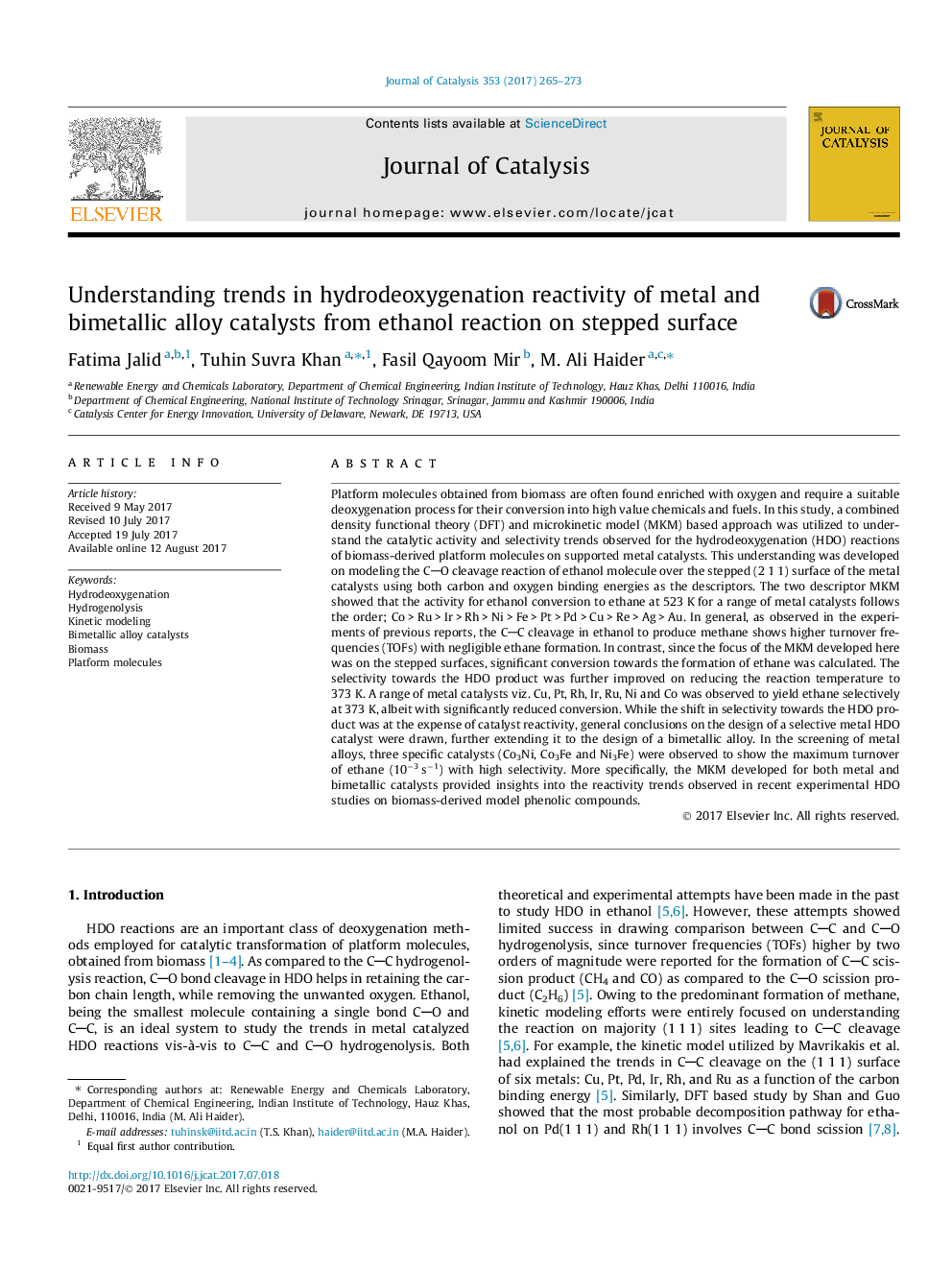| Article ID | Journal | Published Year | Pages | File Type |
|---|---|---|---|---|
| 6455595 | Journal of Catalysis | 2017 | 9 Pages |
â¢MKM developed for understanding CO scission reaction in ethanol.â¢The model predicted trends in the reactivity of metal catalysts for HDO.â¢HDO product selectivity was observed to increase on decreasing temperature.â¢Bimetallic alloys were screened to achieve higher yield of the HDO product.â¢Importance of stepped surface reactivity in modeling HDO reactions was emphasized.
Platform molecules obtained from biomass are often found enriched with oxygen and require a suitable deoxygenation process for their conversion into high value chemicals and fuels. In this study, a combined density functional theory (DFT) and microkinetic model (MKM) based approach was utilized to understand the catalytic activity and selectivity trends observed for the hydrodeoxygenation (HDO) reactions of biomass-derived platform molecules on supported metal catalysts. This understanding was developed on modeling the CO cleavage reaction of ethanol molecule over the stepped (2 1 1) surface of the metal catalysts using both carbon and oxygen binding energies as the descriptors. The two descriptor MKM showed that the activity for ethanol conversion to ethane at 523 K for a range of metal catalysts follows the order; Co > Ru > Ir > Rh > Ni > Fe > Pt > Pd > Cu > Re > Ag > Au. In general, as observed in the experiments of previous reports, the CC cleavage in ethanol to produce methane shows higher turnover frequencies (TOFs) with negligible ethane formation. In contrast, since the focus of the MKM developed here was on the stepped surfaces, significant conversion towards the formation of ethane was calculated. The selectivity towards the HDO product was further improved on reducing the reaction temperature to 373 K. A range of metal catalysts viz. Cu, Pt, Rh, Ir, Ru, Ni and Co was observed to yield ethane selectively at 373 K, albeit with significantly reduced conversion. While the shift in selectivity towards the HDO product was at the expense of catalyst reactivity, general conclusions on the design of a selective metal HDO catalyst were drawn, further extending it to the design of a bimetallic alloy. In the screening of metal alloys, three specific catalysts (Co3Ni, Co3Fe and Ni3Fe) were observed to show the maximum turnover of ethane (10â3 sâ1) with high selectivity. More specifically, the MKM developed for both metal and bimetallic catalysts provided insights into the reactivity trends observed in recent experimental HDO studies on biomass-derived model phenolic compounds.
Graphical abstractDownload high-res image (99KB)Download full-size image
